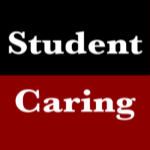Every summer, many students start to get anxious about receiving their forthcoming exam results. For many, their results will hopefully enable them to pursue their chosen path of higher education. Yet for others, their grades may not turn out to be what they had expected, which may necessitate a change of circumstances. Others may only apply at the last minute or change their mind about their choice of course. This can lead to students having to make some difficult or quick decisions. Those who do not get on the course they had hoped to might need to look at alternative options, such as choosing another course, taking a gap year, re-sitting exams or going straight into the world of employment. A careers adviser can advise students on their different options.
Photo source: https://www.flickr.com/photos/uoftengineering/8100507794/
Many students keen to carry on studying, but who do not follow their planned route of continuing education, for whatever reason, may find themselves in the clearing system. In fact every year around 10% of all acceptances from universities occur through clearing.
What is clearing exactly? It is the process by which universities and colleges fill excess course places. It is available from July to September/October each year. Many people go through it to find a course if they have received their exam results, but have not got any course offers. Others go through the process if they had received conditional offers, but their exam results did not meet the required entry grades. It enables them to see what courses at which institutions are left, enabling them to make revised decisions about their future education choices.
Available course places through the clearing system will be published on The Universities and Colleges Admissions Service (UCAS) website. UCAS is the service used by people wishing to apply for further and higher education. The list of courses is updated regularly, so students should keep an eye on the website. The Daily Telegraph also publishes a listing, but this will not be as up to date as the UCAS website. Increasingly, universities and colleges publish courses on their website before they are officially announced following exam result day. Institutions can also help advise how to go through the system, such as Richmond University in London, as well as give indications of grade requirements. Elite universities such as Oxford or Cambridge rarely have courses available through this system, as the demand for places is normally exceedingly high.
From the courses still available, students need to identify any that interest them. This does not necessarily need to be the same subject of course that was originally applied for, but you may be asked why you have made a different decision when applying to an institution. Applicants then need to contact the course providers to see if they will offer them a place on the course. If you are accepted, you may receive an informal offer over the phone. If you accept the place, you will get a confirmation. You will not be accepted for a place if you do not speak to the course provider first. If you are not offered a place, you may be put on a reserve list or turned down. Offers may be given for a limited amount of time, during which the applicant will need to add the institution as a choice on their UCAS Track. If the applicant fails to meet the deadline, the offer will be withdrawn and may be allocated to another student.
Anyone wanting to go through this process will need to wait until their exam results are known. Most places are published and allocated to applicants a week after A level results come out, but many places are still available longer than that. You also need to pay an application fee to be eligible for this process.
Thank you Richmond U. for your valuable contribution: How To Approach Clearing
Why Your Opinion Matters:
Our book:The Caring Professor: A Guide to Effective, Rewarding, and Rigorous Teaching, was written with feedback from many educators and students, which was our plan all along. We began by outlining our thoughts on a series of topics, then we recorded them to share with the world. From the feedback we received, we were informed about the needs of the student caring community. We need your feedback so we may continue to fulfill our mission statement and help students, the world over.
Thank you!
Daniel & David


0 Comments